Zone Performance Report
In order to simplify the management of large environments, eG Enterprise allows Zone definitions, where every Zone can typically comprise of individual components, segments, services, or even other zones. In large zones that consist of tens of thousands of servers, it is very difficult for administrators to focus on the performance of individual servers - a zone-wide overview of performance is hence desired. Therefore, to enable administrators to evaluate the performance of specific component-types that constitute the zone, the suite provides Zone Performance Report. This report, by default, reveals the average performance of the component-type as a whole (e.g., all Oracle databases), and also the average performance of the individual components of the chosen type. Besides indicating the health of the component-type, this report enables administrators to instantly identify the component(s) that serves as the root-cause of the problems (if any) with the type. Moreover, the metrics to be displayed in the report and the functions to be executed on them, are configurable. Administrators thus have the flexibility to configure the critical performance areas alone for monitoring.
To generate a Zone Performance Report, do the following:
- Select the Zone Performance option from the Analytical Reports node of the REPORTS BY FUNCTION tree.
-
Figure 1 will then appear. To monitor a particular type of component that belongs to a zone, select the Zone to which the components of that type have been added.

Figure 1 : Generating a Consolidated Zone Report
Note:
If no zones pre-exist, then you can use the Default zone that is automatically created by eG Enterprise. This zone includes all the independent components in the environment.
- All the component-types that have been added to the chosen zone will then be listed in the Component Type list. For a report on a particular component-type, select the type from the list. To generate a report for all component-types, pick the All option.
- Next, choose a Report Type (Graph or Data). The default Report Type is Graph. To closely observe and clearly understand the behavior of a single performance parameter across a component-type, you can plot a single measure's data alone in a Graph report.
- If the Report Type is Graph, a Measure list box will appear, containing the complete list of measures that you have configured for the report. From this list, pick the Measure for which a graph is to be generated (see Figure 1).
-
Then, select the period (Timeline) for which the graph is to be generated. You can either provide a fixed time line such as 1 hour, 2 days, etc., or select the Any option from the list to provide a From and To date/time for report generation.
Note:
For every user registered with the eG Enterprise system, the administrator can indicate the maximum timeline for which that user can generate a report. Once the maximum timeline is set for a user, then, whenever that user logs into eG Reporter and attempts to generate a report, the Timeline list box in the report page will display options according to the maximum timeline setting of that user. For instance, if a user can generate a report for a maximum period of 3 days only, then 3 days will be the highest option displayed in the Timeline list - i.e., 3 days will be the last option in the fixed Timeline list. Similarly, if the user chooses the Any option from the Timeline list and proceeds to provide a start date and end date for report generation using the From and To specifications, eG Enterprise will first check if the user's Timeline specification conforms to his/her maximum timeline setting. If not, report generation will fail. For instance, for a user who is allowed to generate reports spanning over a maximum period of 3 days only, the difference between the From and To dates should never be over 3 days. If it is, then, upon clicking the Run Report button a message box will appear, prompting the user to change the From and To specification.
-
In addition to the settings discussed above, this report comes with a set of default specifications. These settings are hidden by default. If you do not want to disturb these default settings, then you can proceed to generate the report by clicking the Run Report button soon after you pick a Measure (in case of a Graph report). However, if you want to view and then alter these settings (if required), click on the
 button. The default settings will then appear in the MORE OPTIONS drop down window (see Figure 2). The steps below discuss each of these settings and how they can be customized.
button. The default settings will then appear in the MORE OPTIONS drop down window (see Figure 2). The steps below discuss each of these settings and how they can be customized.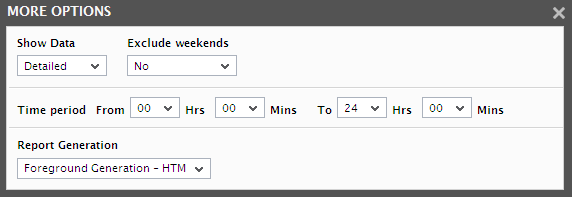
Figure 2 : The default settings for generating the Zone Performance report
-
The speed with which a report is generated depends primarily on the report Timeline. While a Timeline that varies between a couple of days to a week enables the eG Enterprise system to quickly retrieve the required data, timelines that span multiple weeks/months could slow-down the data retrieval and report generation process to a considerable extent, owing to the volume of data involved. In order to ensure quick and easy access to reports, eG Enterprise provides you the option of enabling data retrieval from the Trend information in the database, instead of the Detailed test information that is used by default for report generation. The Detailed test information base comprises of multiple measurement records for a test - one or more each for every test execution. Whereas, the Trend information includes only hourly, daily, and monthly summary computations for a test performed on a continuous basis. For instance, during a period of 1 hour, a test that runs every 5 minutes inserts atleast 12 records into the Detailed test information base. On the other hand, the Trend information base would consist of only 1 record for the same 1 hour period. Fewer the number of records, query execution becomes much quicker, and data retrieval faster. To use the trend data for report generation, you will have to select the Trend option from the Show Data field in Figure 2. By default, the Detailed option is selected in Figure 2 indicating that the report data is retrieved from the detailed test information in the database. If need be, you can also ensure that all reports always use the Detailed test tables alone by hiding the Show Data field from the reporter interface. To achieve this, do the following:
- Login to the eG administrative interface as 'admin'.
- Select the Manager option from the Settings tile that appears when the
 button against the Admin tab is clicked.
button against the Admin tab is clicked. -
From the GENERAL SETTINGS page that then appears, if you set the Compute average/sum of metrics while trending flag to No, then the Show Data field will not appear in the reporter interface; this denies users access to the Trend option, and thus ensures that reports are always generated using the Detailed tables.
Note:
- A Trend report will not include the data for the current day since trend data is only computed at the end of the day.
- If the Trend option is chosen, the time period of the report should be greater than 1 day.
-
The usage of Detailed test tables for generating reports, especially those that span weeks, increases the stress on the eG database, thus resulting in undue delays in report generation. In order to ensure that the database is not choked by such voluminous data requests, you can configure eG Enterprise to automatically "force" the use of the Trend option if the Timeline of a report exceeds a pre-configured duration. To specify this time boundary, do the following:
- Edit the eg_report.ini file in the <EG_INSTALL_DIR>\manager\config directory.
- In the [MISC] section of the file, you will find a DetailedTime parameter.
- Specify the duration (in days) beyond which Detailed reports cannot be generated, against the DetailedTime parameter, and save the eg_report.ini file.
- For instance, to make sure that Detailed reports are disallowed for a Timeline of over 2 weeks, set the DetailedTime parameter to 14 and save the file.
- Say, subsequently, you attempt to generate a Detailed report for a Fixed Timeline of 3 weeks (which is greater than the 14-day limit set in our example). The instant you select the 3 weeks option from the Fixed list box, the Detailed option gets automatically disabled, and the Trend option gets enabled. Similarly, if you specify an Any Timeline that runs over 14 days, then, upon clicking the Run Report button to generate the report, a message box appears (see Figure 8) informing you that only the Trend option is permitted.
- To proceed with the Trend report generation, click the OK button in the message box. To terminate Trend report generation, click the CANCEL button.
-
Next, specify the start time and end time for report generation against the Time period field.
Note:
For every user registered with the eG Enterprise system, the administrator can indicate the maximum timeline for which that user can generate a report. Once the maximum timeline is set for a user, then, whenever that user logs into eG Reporter and attempts to generate a report, the Timeline list box in the report page will display options according to the maximum timeline setting of that user. For instance, if a user can generate a report for a maximum period of 3 days only, then 3 days will be the highest option displayed in the Timeline list - i.e., 3 days will be the last option in the fixed Timeline list. Similarly, if the user chooses the Any option from the Timeline list and proceeds to provide a start date and end date for report generation using the From and To specifications, eG Enterprise will first check if the user's Timeline specification conforms to his/her maximum timeline setting. If not, report generation will fail. For instance, for a user who is allowed to generate reports spanning over a maximum period of 3 days only, the difference between the From and To dates should never be over 3 days. If it is, then, upon clicking the Run Report button a message box will appear, prompting the user to change the From and To specification.
Note:
The default Time period to be displayed here can be configured using the consolidated reports page in the eG administrative interface; to access this page, follow the menu sequence: Settings -> Reporter -> Consolidated Reports. For more details regarding this page, refer to Consolidated Reports .
-
If the timeline specified for the report needs to exclude the data collected during the Weekends, then set Exclude weekends to Yes. If not, select No.
Note:
You can configure the days of the week that need to be considered as a ‘weekend’ using the consolidated reports page in the eG administrative interface; to access this page, follow the menu sequence: Settings -> Reporter -> Consolidated Reports. For more details regarding this page, refer to Section Consolidated Reports.
-
Besides a pie chart, the report of type Graph will also invoke a comparative bar graph. This bar graph will, by default, reveal the top - 10 components (of a particular type or across all types) in the selected Zone in terms of the Measure chosen. This is why, the Show list is set to Top-10 by default. You can however view any number of top/bottom players in a particular performance area by picking any top or last option from the Show list.
Note:
By default, the values displayed in the Show list range from top-10 to Last-10. This is because, the Showtop parameter in the [infos] section of the eg_report.ini file (in the <EG_INSTALL_DIR>\manager\config directory) is set to 10, by default. You can, if required, configure the Show list to display a different range of options. For this, specify a different number against the Showtop parameter, and save the eg_report.ini file.
-
In large environments, reports generated using months of data can take a long time to complete. Administrators now have the option of generating reports on-line or in the background. When a report is scheduled for background generation, administrators can proceed with their other monitoring, diagnosis, and reporting tasks, while the eG manager is processing the report. This saves the administrator valuable time. To schedule background processing of a report, you can either select the Background Save - PDF option or the Background Save - CSV option from the Report Generation list. In this case, a Report Name text box will appear, where you would have to provide the name with which the report is to be saved in the background. To process reports in the foreground, select the Foreground Generation - HTML option from this list.
Note:
- The Report Generation list will appear only if the EnableBackgroundReport flag in the [BACKGROUND_PROCESS] section of the eg_report.ini file (in the [EG_INSTALL_DIR]\manager\config directory) is set to Yes.
- The default selection in the Report Generation list will change according to the Timeline specified for the report. If the Timeline set is greater than or equal to the number of days specified against the MinDurationForReport parameter in the [BACKGROUND_PROCESS] section of the eg_report.ini file, then the default selection in the Report Generation list will be Background Save - PDF. On the other hand, if the Timeline set for the report is lesser than the value of the MinDurationForReport parameter, then the default selection in the Report Generation list will be Foreground. This is because, the MinDurationForReport setting governs when reports are to be processed in the background. By default, this parameter is set to 2 weeks - this indicates that by default, reports with a timeline of 2 weeks and above will be processed in the background.
- Finally, click on the Run Report button to generate the report.
-
If the Report Type is Graph and the option chosen from the Report Generation list is Foreground Generation - HTML, then, clicking on the Run Report button will invoke Figure 3, which will reveal the following:
-
A distribution pie chart that reveals the number of components in different distribution ranges (see Figure 3). The distribution ranges are obtained based on the first of the configured functions for the chosen Measure. For instance, assume that CPU utilization is the chosen Measure. Say that you have configured to display the Avg and Max of CPU utilization in the zone performance report. Typically, both these configured values will appear only in a Data report. In the case of a Graph report however, the first of the two functions - i.e., Avg of CPU utilization - alone is calculated for every component of the chosen component-type. The resulting pie chart enables administrators to deduce at a single glance, the number of components in which CPU utilization has been highest. Clicking on a particular slice in the pie chart lists the components that fall within the value range represented by that slice (see Figure 4). Against every component name, the actual values for each of the configured functions (both Avg and Max, in our example), and also the Health % of each of the components will be displayed. A zone-level Summary of the chosen Measure and the Normal % will also be available.
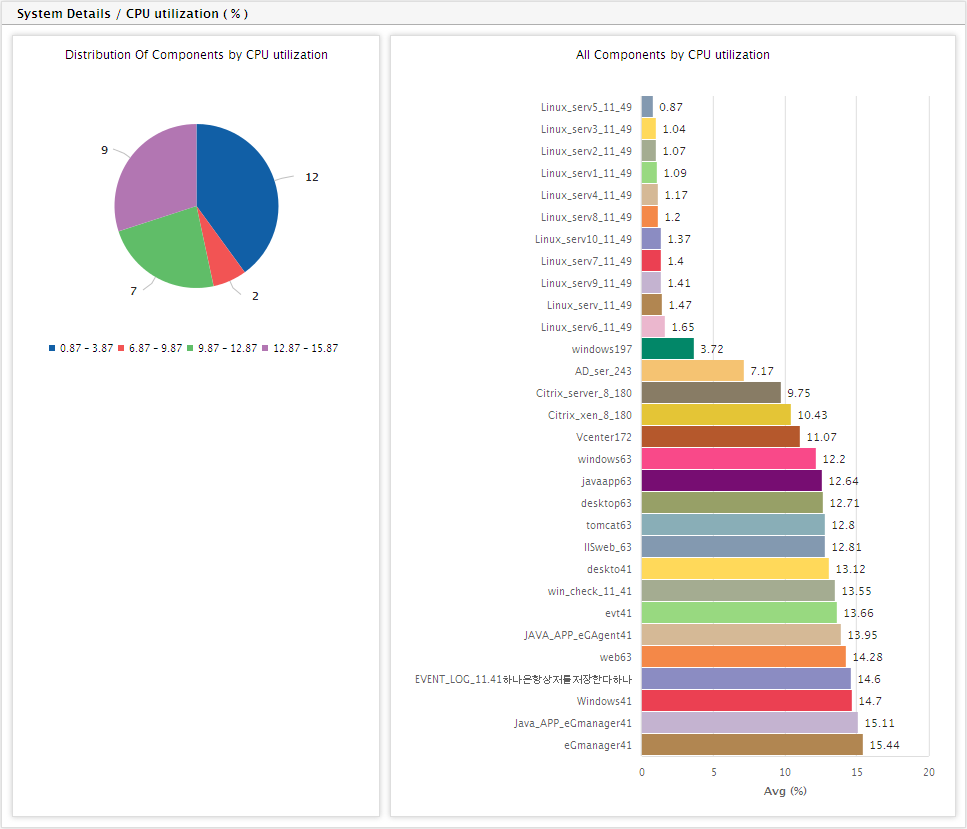
Figure 3 : A graphical Zone Performance report
Note:
By default, the chart type for distribution is a pie chart. However, you can have a bar graph depict the same data instead of a pie chart, by following the steps given below:
- Edit the eg_report.ini file in the <EG_INSTALL_DIR>\manager\config directory.
- Change the value of the chartTypeForDist parameter in the [zone_report] section of this file from the default Pie, to Bar.
- Save the eg_report.ini file.
By default, the number of value ranges that need to be configured for the distribution chart is 10. To override this default setting, do the following:
- Edit the eg_report.ini file in the <EG_INSTALL_DIR>\manager\config directory.
- Specify a number of your choice against the nofRangeForDist parameter in the [zone_report] section of this file. By default, this parameter will hold the value 10.
-
Save the eg_report.ini file.
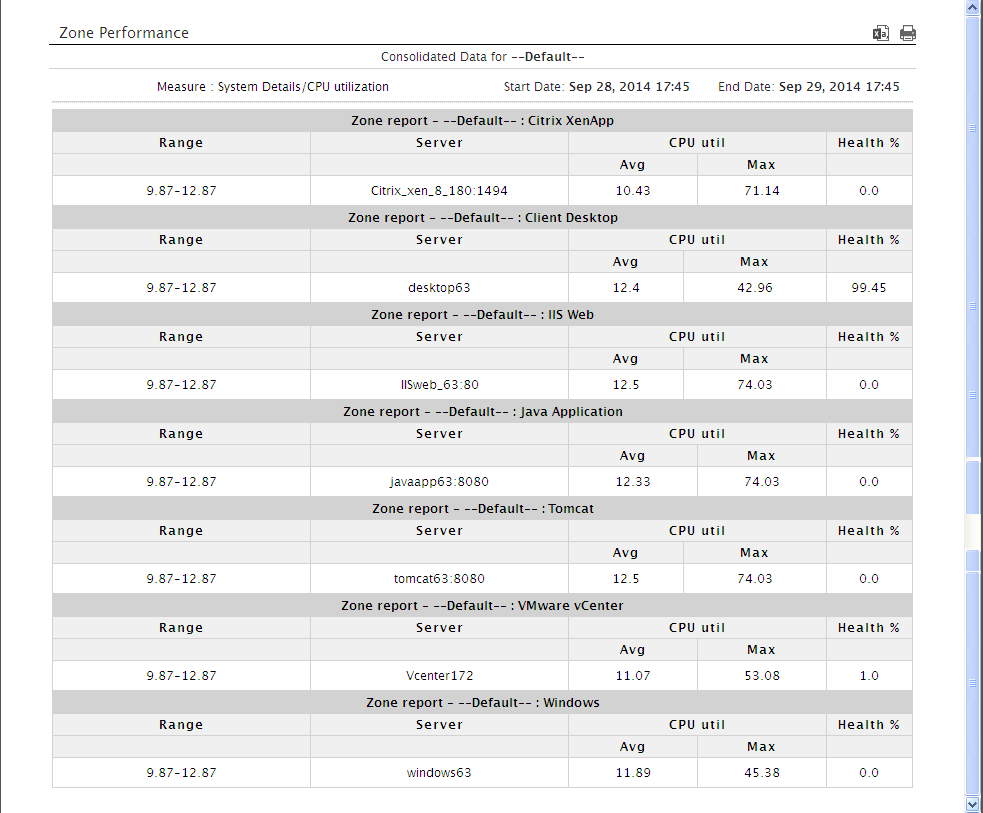
Figure 4 : A list of components with CPU utilization in a given range
-
Adjacent to the pie chart, you will find a bar chart that indicates the components that have topped/failed in a selected performance realm (i.e., the Measure) during the specified Timeline. For example, for the CPU utilization measure, this bar chart reveals the components that are the top CPU-consumers. Like the pie chart, the values for the bar chart are also calculated by applying the first of the configured functions on the chosen Measure. Clicking on the bar corresponding to a server name results in a Server Report (see Figure 5) that enables you to focus on the performance of that server.
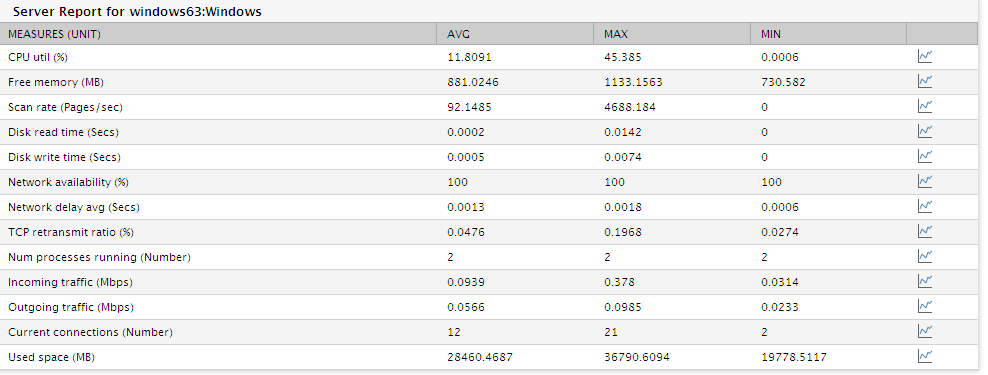
Figure 5 : The server report that appears upon clicking on a bar chart
Note:
The number of components to be displayed in the Top <N> Components bar chart is configurable. To specify the number, do the following:
- Edit the eg_report.ini file in the <EG_INSTALL_DIR>\manager\config directory.
- Specify a number of your choice against the NoOfServersforChart parameter in the [zone_report] section of the file. By default, the value displayed here is 10, indicating that, by default, the bar chart will be for the Top 10 Components. For example, if you change this value to 5, then a bar chart displaying the Top 5 Components will appear.
-
Finally, save the eg_report.ini file.
Note:
You can configure the colors to be used in the distribution chart and the Top <N> Components bar chart in the zone report, by editing the eg_report.ini file in the <EG_INSTALL_DIR>\manager\config directory. The [ZONE_REPORT] section of the file defines the 20 default colors of the distribution and bar charts:
[ZONE_REPORT]
ChartColor=#8399b0,#ffd95a,#a4ac91,#98d980,#d5b996,#f48848,#8b8cc2,
#eb4052,#c4b3d0,#b18651,#ebb7ce,#028768,#f5c372,#887c65,#e4c536,
#b5582c,#f94989,#770d72,#97a067,#89aeb7distColor=#115fa6,#f25454,#60bd68,#b276b2,#81bef7,#a61120,#ffd13e,
#770d72,#887c65,#a4ac91You can override the default color settings of the distribution chart by modifying the color-codes specifying against distColor. For changing the colors used by the Top <N> Components chart, alter the codes listed against the ChartColor parameter.
-
- Unlike a Graph report, a Data report does not graphically represent the measure data. Instead, the configured details are presented in a tabular format in the report.
-
If the Report Type chosen is Data and the option chosen from the Report Generation list is Foreground Generation - HTML, then, clicking on the Run Report button will invoke two tables providing the user- configured details (see ) for the chosen component-type. By default, the Summary section of the report will display the average values of each of the configured measures across the farm. In the section providing per-server information though, eG Enterprise will display multiple values for a measure depending upon the number and type of functions that have been configured for the measure. For example, in , note that the second section displays both the Avg and Max values for the Cpu util measure, but only the Avg value for the Disk busy measure.
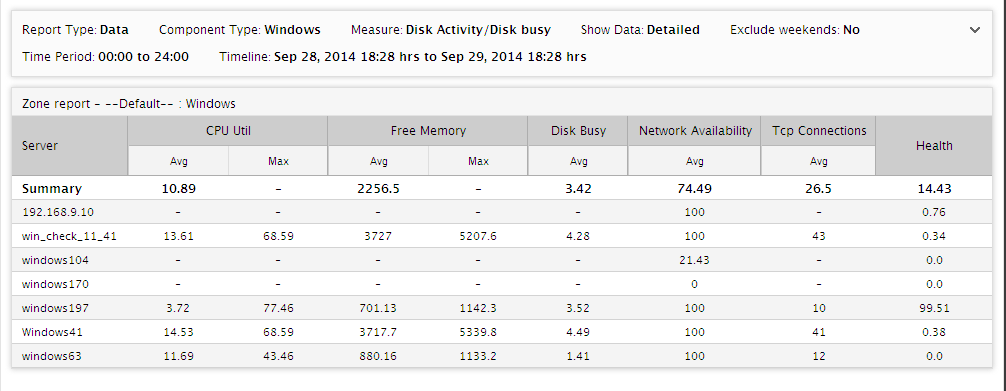
-
Besides the above-mentioned details, the Data report also contains a Health % column (see Figure 6). This column indicates the percentage of time a particular server has been in the Normal state during the chosen timeline. If a server has remained the constant victim of problems during the specified time period, then this percentage will obviously be low. To drill down to the root-cause of the issues affecting the server, click on the corresponding Health % value. This will lead you to the Executive report of the problem server, which will reveal when and what type of problems were encountered by the server (see Figure 7).
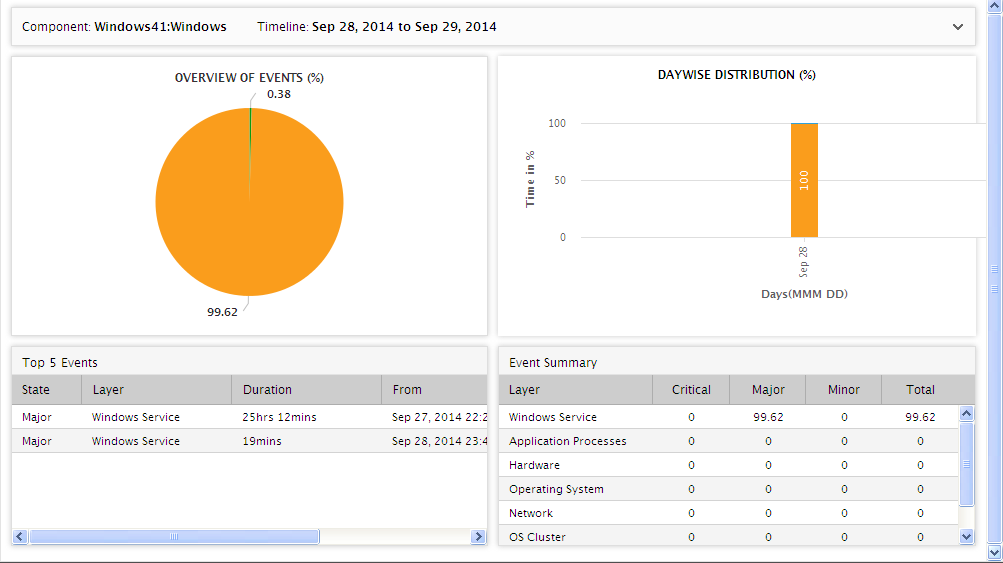
Figure 7 : The Executive report of the problem server in the zone performance report
-
Also, to focus on the health of a particular server displayed in the Data report, click on the corresponding Server name in Figure 6. The Server Report will then appear (see Figure 8).
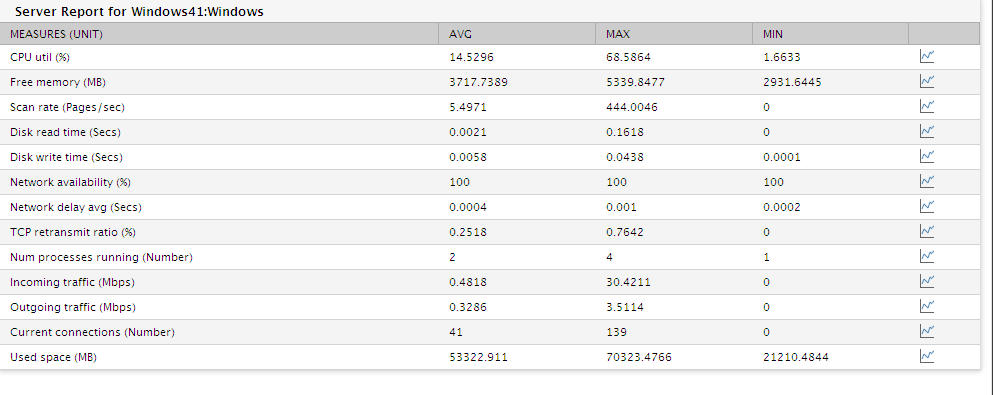
Figure 8 : The server report that appears when a server in the Consolidated Zone Data Report is clicked
-
As stated earlier, you can configure the information that needs to appear in the zone report. To achieve this, you will have to access the consolidated measures page in the eG administrative interface. To access this page, do the following:
- Select the Consolidated Reports option from the Reporter option of the Settings tile in the eG administrative interface.
- In the CONSOLIDATED REPORTS page that appears, click on the Configure metrics for specific component type button.
- The CONSOLIDATED MEASURES page then appears. To know how to configure measures for a Server Performance report using this page, refer to Consolidated Reports.
